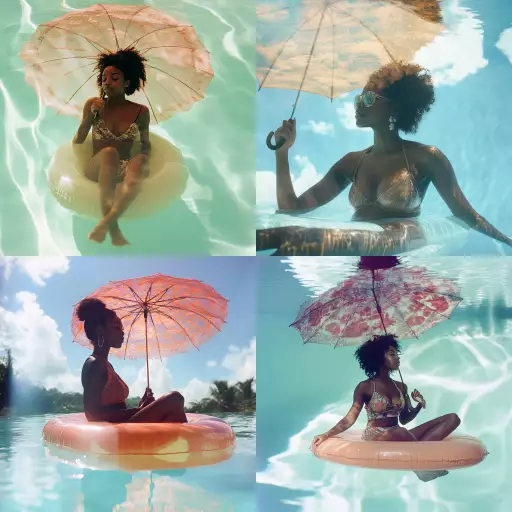Explore the Best AI Image Gallery

Beyond the Brush: How AI-Powered Visual Experiences are Transforming the Creative Industry
The intersection of artificial intelligence (AI) and visual art is rapidly evolving, giving birth to a new era of creative possibilities. AI-powered tools are no longer confined to the realm of science fiction; they are actively reshaping how we create, experience, and interact with visual content. This blog post will explore the profound impact of AI-driven visual experiences on the creative industry, examining its diverse applications, ethical considerations, and promising future trends.
Applications of AI in Visual Creation
AI is revolutionizing various aspects of the creative process, empowering artists, designers, and developers with innovative tools and techniques:
1. Generative Art:
AI algorithms can generate entirely new visual artworks, ranging from abstract patterns to realistic landscapes, pushing the boundaries of artistic expression. Tools like DALL-E 2 and Midjourney allow users to input text prompts and receive unique AI-generated images, democratizing art creation.
2. Design Automation:
AI can automate repetitive design tasks, such as generating layouts, selecting color palettes, and optimizing typography, freeing up designers to focus on conceptualizing and refining creative ideas. This streamlines the design workflow and increases efficiency.
3. Personalized Content Creation:
AI algorithms can analyze user preferences and generate personalized visual experiences, such as tailored advertising campaigns, dynamic website content, or customized art pieces based on individual tastes. This creates immersive and engaging experiences that resonate with specific audiences.
Ethical Considerations in AI-Driven Visual Experiences
While the potential of AI in visual creation is vast, it also raises important ethical considerations:
1. Copyright and Ownership:
Who owns the copyright to AI-generated artwork? The creator of the algorithm, the user who provides the prompt, or the AI itself? This legal gray area requires careful consideration and established guidelines.
2. Bias and Representation:
AI algorithms are trained on massive datasets, which can contain inherent biases that reflect societal prejudices. This can result in AI-generated content perpetuating stereotypes and underrepresenting certain groups. It is crucial to address bias in training data and promote diversity in AI development.
3. Authenticity and Trust:
The ability of AI to create highly realistic images raises concerns about authenticity and trust. Deepfakes, for example, can be used to generate convincing yet fabricated content, blurring the lines between reality and simulation. It is essential to develop methods for detecting and mitigating the misuse of AI-generated visuals.
Future Trends in AI-Driven Visual Experiences
The field of AI-powered visual experiences is constantly evolving, with exciting trends shaping its future:
1. Immersive Environments:
AI will play a key role in creating immersive and interactive virtual environments, such as augmented reality (AR) and virtual reality (VR) experiences. Imagine exploring historical sites through AI-powered reconstructions or collaborating with colleagues on 3D models in real-time.
2. Personalized Learning:
AI can personalize educational content by tailoring lessons, simulations, and interactive experiences to individual learning styles and needs. This can enhance engagement and improve learning outcomes in visual arts and design fields.
3. Human-AI Collaboration:
The future of creative work lies in a collaborative relationship between humans and AI. Artists and designers will leverage AI tools to augment their capabilities, exploring new artistic expressions and pushing the boundaries of imagination.
Conclusion
AI-powered visual experiences are transforming the creative industry, unlocking unprecedented possibilities for artists, designers, and innovators. While ethical considerations must be carefully addressed, the potential benefits are immense. As AI technology continues to advance, we can expect even more groundbreaking applications that will reshape the way we create, experience, and interact with visual content.



